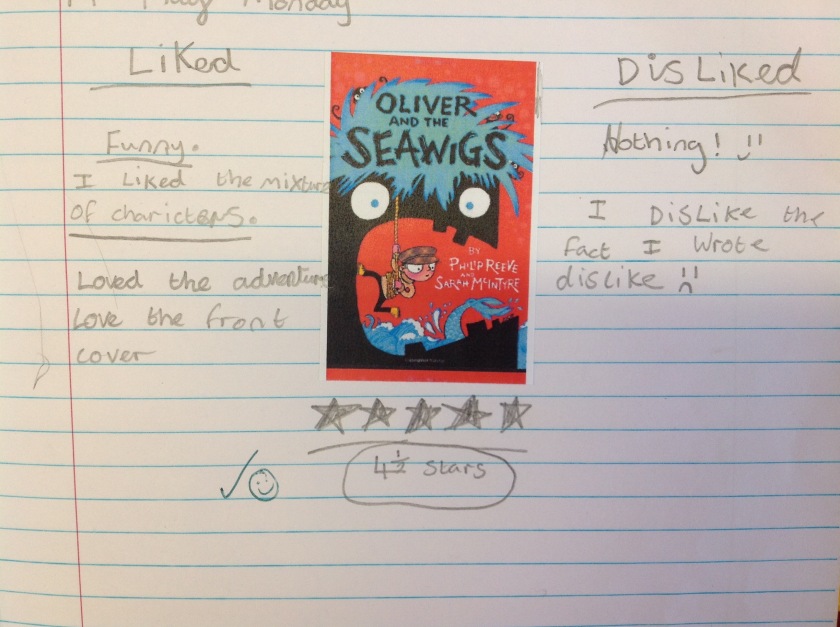
This is a stunning book. I thought it would fit in well with our science topic of plants. It is the story of a boy called Brigg, who works in a library where ‘dangerous books’ are stored. It is set in a dull, grey future world where there are no plants (When Brigg discovers a book about flowers he doesn’t know what they are: just that they are beautiful).
Class 3 started by looking at the cover and reading the blurb: there was lots to discuss. There is some sophisticated vocabulary in the blurb which we unpicked together. I asked the children to come up with questions about the book: what did they think might happen? What did they want to know? This provoked some interesting discussion. One child was excited to share that she thought it might be similar to ‘The Promise’, a book she had read at Art Club, because that was set in a dull future too. She was spot on with this observation and the two books would work well together (as would Footpath Flowers I think).
We didn’t read the story for a few days (the bank holiday weekend happened!) and the children were really keen. I photographed the pages and put them into a powerpoint, zooming in on the details, as it is tricky to share a picturebook if you’ve only got one copy: the children really do need to study the pictures. What followed was astounding. I had looked through this book several times but I didn’t come up with anything like the ideas and observations the children had. It always amazes me how much children bring and interpret and notice that I haven’t. “Look at the cat! It looks just like the boy from the first picture with the stripy jumper! Are they in any pictures together? Perhaps he IS the cat!”; “Why does he go to work when he’s only a boy?”; “Maybe the books are dangerous because they will suck you into the story and you will be trapped forever.”; “Maybe the ruler of this world is evil and doesn’t want any colour.”; “Perhaps they have hidden the books because there aren’t any flowers any more and they don’t want people to be sad – if they don’t know about it then they won’t miss it.” (Mrs G nods sagely at this point); “The picture is in colour!” ; “Look at the clouds…or is it smoke? Maybe the smoke is showing where the flowers are?”
We all sat and listened as one child literally talked his way around to understanding: he started in one place and ended up in entirely another (it took a while but it was a joy to listen to!). We spent a good 50 minutes reading and discussing the story (far longer than I’d planned, but it was too rich an opportunity to rush – how often do we teachers allow ourselves and the children enough time to do something as well as we’d like?).
The next day we read the story again (quickly this time), and the children did an activity where they wrote thought bubbles at different points in the story: what might Brigg be thinking here? This showed different levels of understanding (as you might expect). We discussed a few ideas each time. This is a good activity to show who is looking and thinking beyond the obvious – we had a chat about whether Brigg would actually think, “I’m really happy!” or whether he would think something else which would show his happiness.
Finally the children wrote a short synopsis and book review. You could spend far longer on this book (and I will refer to it again) but, as always, time is short. As one of my class wrote, “A beautiful book that you could read over and over again.”
















